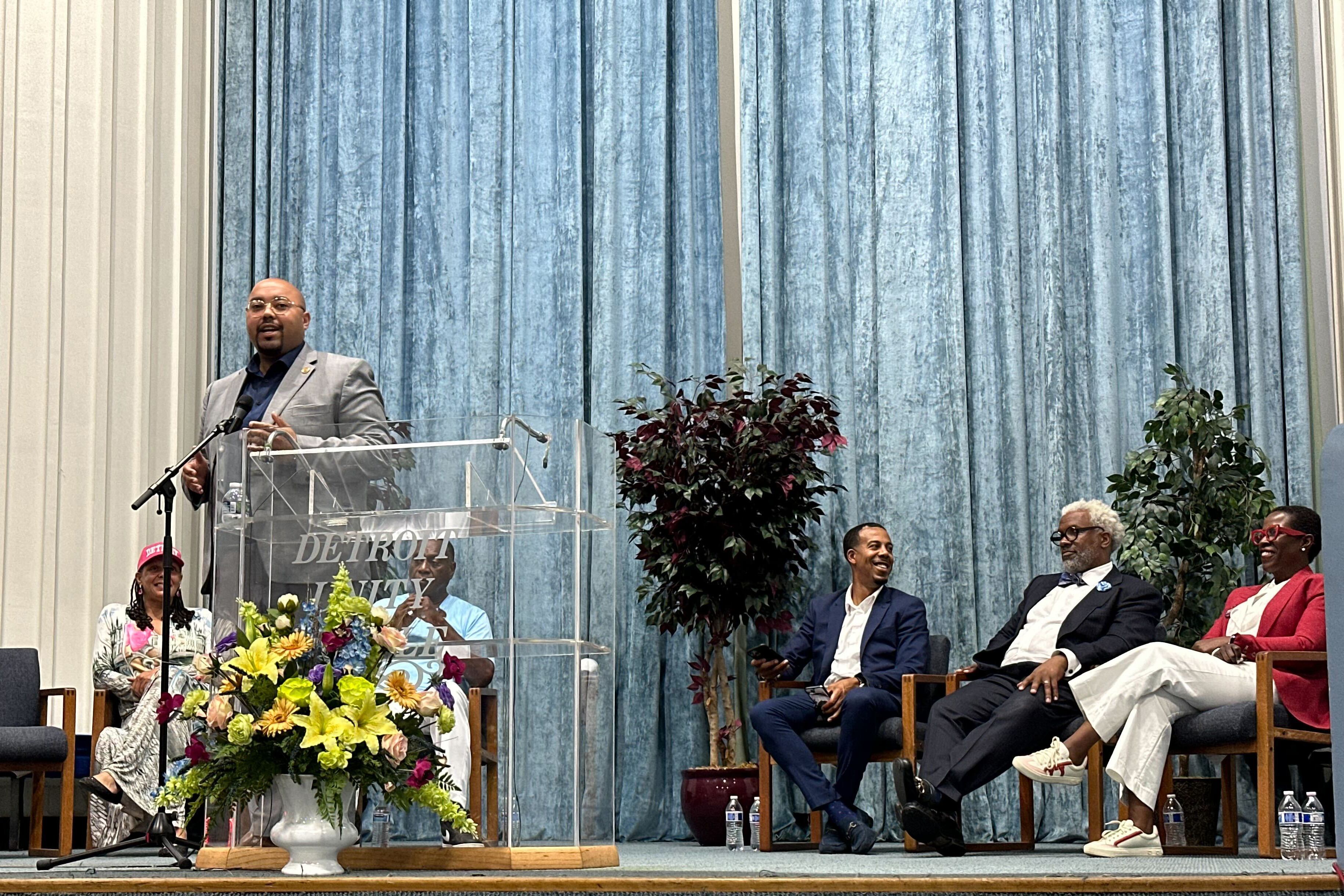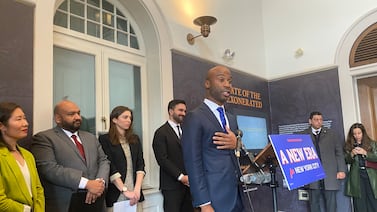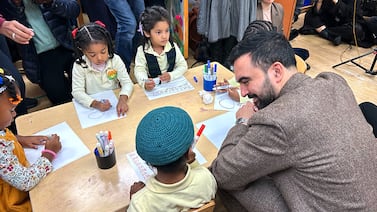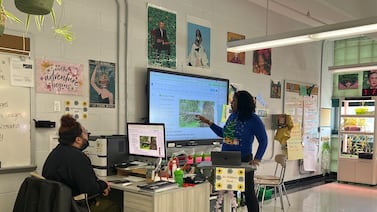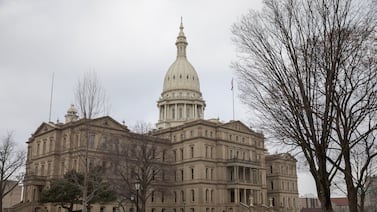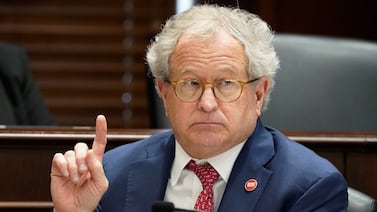Sign up for Chalkbeat Detroit’s free newsletter to keep up with the city’s public school system and Michigan education policy.
High absenteeism rates, youth fearing for their safety, and a fragmented education scene with dozens of governing bodies overseeing 185 public schools mean Detroit’s next mayor will have their hands full if they want to improve outcomes for young people.
Next week’s primary is the first open race for mayor in more than a decade, and nearly all of the candidates racing for the top two vote-getting spots say they have plans for how the mayor can play a more effective role in education.
But it will be a tough challenge in Detroit, because the scope of the problem includes low academic achievement and high rates of students missing far too much school, and also because factors such as extreme poverty, housing instability, and transportation woes impede school success for a majority of students.
Community leaders like Angelique Power, the president and CEO of the Skillman Foundation, see this election as a “liminal moment” for Detroit public education, because along with a new mayor, the city will elect new city council members. Next year, Michigan residents will elect a new governor.
“This is sort of a fight for the future and the soul of Detroit.”
While Detroit’s mayor doesn’t have control or oversight of schools, the person elected in November will need “political will” to create cohesion in the city’s schools when there is pushback, Power said. (The Skillman Foundation is a Chalkbeat funder. To learn more about our funding, go here.)
That’s important considering the city has 185 public schools. That translates to one elected school board overseeing more than 100 schools in the Detroit Public Schools Community District, and 56 appointed school boards overseeing charter schools. Meanwhile, city leadership must take into account the nearly 30,000 school-age children who live in Detroit but leave the city every day to attend suburban schools.
“There’s no cohesive vision or strategy that crosses over the different types of public schools that we have here,” Power said.
That matters greatly. While DPSCD can boast of some high-performing schools, and charters can too, many schools in the city are struggling academically.
Nine Detroiters are running for mayor. They are Jonathan Barlow, James Craig, Fred Durhal, Joel Haashiim, Saunteel Jenkins, Solomon Kinloch, Todd Perkins, Mary Sheffield, and DaNetta Simpson.
Just five of them (Barlow, Durhal, Jenkins, Perkins, and Sheffield) filled out a Chalkbeat Detroit survey first sent to the candidates July 2. Between those responses and a candidate forum hosted recently by the Detroit Federation of Teachers, Chalkbeat got a clear picture of what the candidates would prioritize on education.
They say there needs to be better coordination between the city and schools to align resources. They want to improve attendance and other outcomes such as safety for city students. They want to work to ensure that schools receive adequate state and federal funding. They want to improve access to a number of services, including after-school programs and career and technical education programs. You can read their responses below.
“The need to fix the broken bridge and communication between City government and schools is pressing,” Durhal wrote in his response.
Wayne State University researcher Sarah Lenhoff, whose team has done extensive research about Detroit education issues, including chronic absenteeism, enrollment, and housing, is pleased to see candidates making education a focus. She’s long believed that Detroit’s mayor should play a bigger role in improving the city’s education landscape as well as the conditions that support student success.
“It should be the responsibility of the mayor,” said Lenhoff, director of the Detroit Partnership for Education Equity and Research, or Detroit PEER. “Just because they don’t have direct authority over the schools doesn’t mean they don’t have a lot of influence over how well the schools are doing, how well students are doing in the city. It’s overdue, and I’m hopeful that whoever becomes mayor will carry that through into action while they’re in office.”
Playing a role, but leaving control to the schools
If Detroit’s next mayor plays a key role in education, they’ll have to overcome skepticism from residents who may still be wary after more than two decades of reform attempts.
Helen Moore, a longtime education activist in the city who has pushed back against school takeovers, said she’s not opposed to the next mayor having some input on education issues.
Detroit’s mayor “should have a role, but they should not be taking over,” Moore said. “That’s happened before,” and it didn’t work, she said.
Moore said the mayor needs to send their representatives to school board meetings to listen to the public and understand the district’s challenges. They need to be focused on helping students succeed, she said.
“We’re going through hell trying to get them (students) to the place they should be,” Moore said. “There are too many people trying to keep our children from getting the quality education they deserve.”
Mayoral control became an early reform effort when Michigan lawmakers transferred control of Detroit Public Schools to the city mayor in 1999, allowing then-Mayor Dennis Archer to appoint a seven-member school board that answered to him.
That experiment ended in 2005, when Detroit voters approved a ballot initiative to return to an elected board. But in 2009, mounting debt in DPS led then-Gov. Jennifer Granholm to appoint the first of what would become a series of emergency managers who had almost complete control of the district. By the time emergency management in the district ended in 2016, the debt had ballooned to catastrophic levels.
To ward off bankruptcy and unsaddle classrooms from the debt, Michigan lawmakers implemented a controversial plan to create a new district — DPSCD — to educate students and operate schools, while DPS remained intact to collect tax revenue and pay off debt. DPSCD has been on relatively solid financial footing since it had that fresh, debt-free start.
But the many years of state and mayoral oversight decimated the district. Enrollment declined from around 160,000 just a few years after mayoral control began to around 49,000 today. Dozens of schools closed, leaving some areas of the city with no neighborhood schools.
And the emergence of charter choices, which began opening in Michigan in the mid-’90s, has created intense competition in Detroit, giving parents a plethora of often dizzying options for where to send their children. It’s also created instability in the system as parents move their children frequently from school to school, often in the middle of the school year. Those frequent moves happen for a number of reasons, including a desire to find the best option for their children but often because housing instability forces families to move unexpectedly.
In a 2018 special report on the effects of frequent moves, Chalkbeat Detroit and Bridge Michigan explored how they create instability and makes it difficult for schools to improve academically.
Tackling chronic absenteeism will be a key issue
Lenhoff and Jeremy Singer, her colleague and fellow researcher, coauthored a book released earlier this year about chronic absenteeism in Detroit in which they argued that schools alone can’t solve the intractable problem and called on city and community leaders to get more involved. Detroit PEER recently released several fact sheets that highlight areas where it sees the mayor having “the most direct influence over the conditions for learning and education in the city.”
About 60% of DPSCD students were chronically absent during the last school year, meaning they missed 18 or more days of instruction. Citywide, the rates have hovered around 50%.
“Many of the big reasons why kids miss so much school in Detroit have little to do with the schools themselves and have much more to do with the conditions in which they’re living, with their access to transportation, with their housing and neighborhood situations,” Lenhoff said.
Those are mostly within the control of the mayor and city government.
So what could the city do? According to Lenoff, it could make it easier for kids to ride public transit to and from school, strengthen the safety of neighborhoods so students who live close enough can feel safe biking or walking to school, and invest in family-friendly affordable housing.
The city has invested in affordable housing, but for Lenhoff, the key question is whether there’s an emphasis on housing that can accommodate families and is located near schools.
Those housing efforts, she said, don’t necessarily require working with school systems, but they might be more effective if they were coordinated with DPSCD and major charter school operators “to ensure alignment between where the city’s investing and where schools are prioritizing their efforts.”
Many families in Detroit lack reliable transportation, making it difficult for kids to get to school every day. The Detroit PEER fact sheet on the top notes that a third of families in Detroit don’t own a car, and 30% of families don’t have a fixed way to get their children to school.
DPSCD doesn’t provide yellow school bus transportation for most high school students, who can receive bus passes to take city buses. But just 4% of students use those bus passes to go to school daily, according to the fact sheet.
The city can look for ways to make riding city buses more palatable and convenient for teenagers, perhaps by letting teens use their student identification cards instead of bus passes, Lenhoff said. Crucial steps would be researching bus routes to ensure they are located in areas that are more easily accessible for students, making sure buses arrive on time, and making sure bus stops are safe.
Another area the next mayor can collaborate on is promoting district schools. DPSCD and charter schools in the city would be far more stable enrollment-wise if they were able to reengage with students who leave the city to attend suburban schools.
“Our city’s leaders have an interest in those children coming back to the city for school, and, you know, for neighborhoods to have thriving community-based schools,” Lenhoff said. “So figuring out ways to promote that … could be really worthwhile.”
Editor’s note: This story was updated after a fifth candidate, Jonathan Barlow, filled out Chalkbeat’s candidate survey after publication.
Lori Higgins is the bureau chief for Chalkbeat Detroit. You can reach her at lhiggins@chalkbeat.org.

